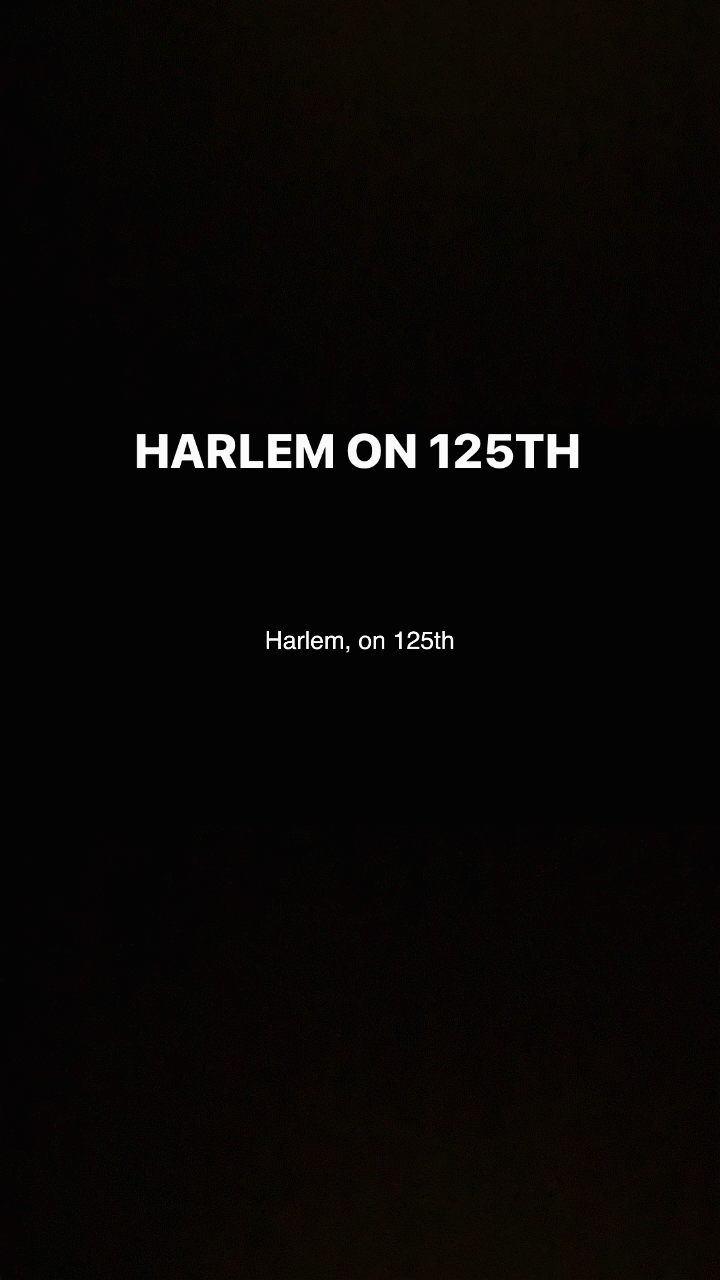(A) Video
(B) Description
The Black Diasporas project, by afrOURban in collaboration with Simba Mafundikwa, documents the experiences of Black individuals and the spaces and places that have meaning to them in New York City. The project manifests as geolocated narratives of Black people, defined in this project as including people of African ancestry, who have been brought by force or made their way to the United States since 1619 and the colonization of the Americas.
This project was created to document and the ways in which Black Diasporas relate to each other, experience and occupy the place we call New York City in order to gain more of an understanding of the diversity of ways this is experienced at a personal level. The aspect of Black Diasporas we are most interested in is how these cultures engage with each other, in spaces that are not governed by the dominant culture.(1) From this we will gain a better understanding of the ways in which the vernacular culture of this city is moulded by the interactions of the various Black Diasporas.(2)
Demographic research done by sociologists supports the hypothesis that socio-economic status was not a factor in the location of Black residents in New York more in 1880 than in 1940.(3) The results of the concentration in location can arguably be seen in Black cultural experience of the Harlem Renaissance. Harlem at 135th Street and Lennox Ave in the early 1900s has been described as the Mecca of Black culture for Black Diasporas migrating to New York City from across the United States and the world.(4) The work of Nella Larsen, Zora Neil Hurston, W.E.B Du Bois, James Baldwin and Langston Hughes was undoubtedly influenced by their lives in New York City. One of the main aims of this project is to gain more insight into where these exchanges are happening now, and the places they have happened in the living memory of Black people in New York City.
(1) Paul Tiyambe Zeleza ‘Diaspora Dialogues: Engagements between Africa and Its Diasporas’ in Nzegwu, Nkiru. The New African Diaspora. United States: Indiana University Press, 2009. p. 31.
(2) Gilroy, Paul. The Black Atlantic: Modernity and Double Consciousness. United Kingdom: Verso, 1993. p. 15.
(3) John R. Logan, Weiwei Zhang and Miao David Chunyu ‘Emergent Ghettos: Black Neighborhoods in New York and Chicago, 1880–1940’ in American Journal of Sociology Vol. 120, No. 4 (January 2015), p. 1056.
(4)Stephen Robertson, ‘Putting Harlem on the Map’ in Jack Dougherty, Kristen Nawrotzki, Writing History in the Digital Age. United States: University of Michigan Press, Digital Culture Books, 2013. p. 186.
Manahatta-New York
Black voices telling Black stories
Team:
Creative Direction by Kholisile Dhliwayo & Simba Mafundikwa
Interviewing by Kholisile Dhliwayo & Simba Mafundikwa
Filming & Direction by Kalu Oji
Design & Branding by MRPJ Designs
Website by Gwinyai Chakonda
(C) From the map













(A) Video
Filming & Editing by Kalu Oji
Captioning & creative direction Kholisile Dhliwayo
(C) From the map extracts
Gifs and captioing by Kholisile Dhliwayo,
Graphics and video by Kholisile Dhliwayo, Kalu Oji & Phillip Johnson
left to right from top left
1- Jelani talking about her parents
2- Jelani talking about the 1980s in New York
3- Glenn talking about the 1980s in New York
4- Edinam talking about the 4 train
5- Simba asking about trains
6- Edinam talking about his parents
7- Louise talking about Staten Island
8- Donovan talking about the BLM protests
9- Edinam talking about soccer at Yankee stadium
10 - Glenn talking about where he grew up
11- Glenn talking about the village
12- Donovan talking about his heritage
13- Amanda talking about the Brooklyn Museum steps

